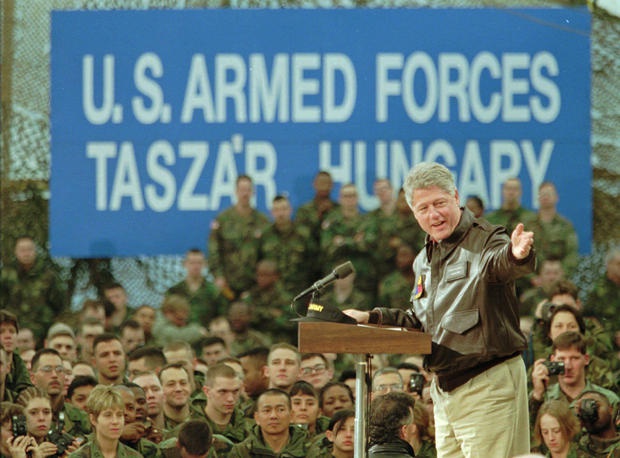NATO’s first military base in former Warsaw Pact territory – Taszár Air Base
Fact of the Hungarian figure „Joining the Alliances”
Part of the „Back to Europe together” topic
Taszár Air Base, located near Kaposvár, Hungary, holds a significant place in post-Cold War history as NATO’s first military base in former Warsaw Pact territory. Originally built in 1929 as a civilian airport, Taszár’s role evolved over the decades, especially during and after World War II, when it became a key military installation for Hungary’s air force. However, it was the events of the 1990s, specifically the Yugoslav Wars, that thrust Taszár into the spotlight on the international stage.
Following the collapse of the Soviet Union and the dissolution of the Warsaw Pact, Hungary sought closer ties with Western institutions, including NATO. As part of Hungary’s efforts to align with the West, the country allowed NATO forces to use the Taszár Air Base during the Balkan conflicts of the 1990s. In 1995, the Hungarian government approved the stationing and transit of NATO and U.S. forces at Taszár, marking a historic moment in Hungary’s post-communist military integration. The base became a crucial logistics hub for the U.S. Air Force, supporting the NATO-led peacekeeping missions IFOR and SFOR in the Balkans.
Taszár was not only a base for air operations but also a site for deploying Predator drones and a training center for peacekeeping forces. At its peak, the complex could accommodate around 20,000 personnel, including military and civilian staff. The significance of Taszár in U.S.-Hungarian relations was underscored by a visit from then-U.S. President Bill Clinton in 1996, highlighting the strategic importance of the base in maintaining stability in Southeast Europe.
The success of the NATO missions in the Balkans diminished the need for Taszár’s continued operation, and in 2004, the U.S. military withdrew from the base. On June 30, 2004, the American flag was lowered in a ceremony, and the base was handed back to the Hungarian military. Despite its closure in 2005, Taszár remains a symbol of Hungary’s post-Cold War transition and its integration into NATO and Western security frameworks.
Taszár’s role as a NATO base was a pivotal moment in Central European geopolitics, representing the shifting alliances of the region. As Hungary became a full NATO member in 1999, Taszár marked the practical beginning of Hungary’s military collaboration with Western forces. The base was a testament to Hungary’s commitment to international peacekeeping efforts and its strategic importance in post-Cold War Europe.





